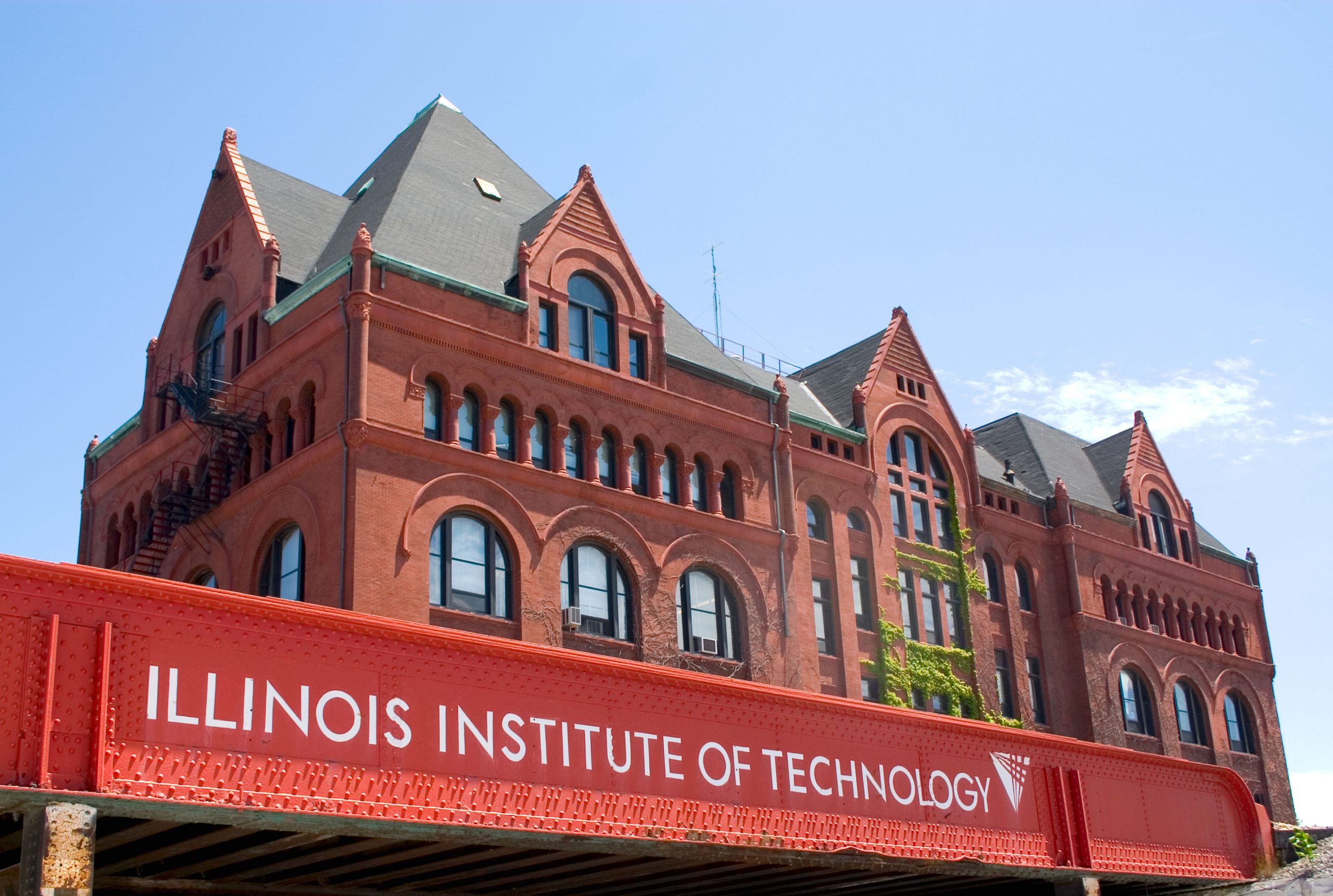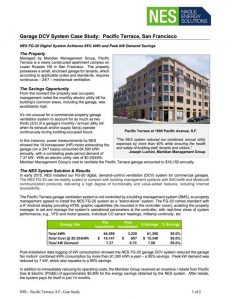System Reduces kWh and Peak kW Demand By Up To 97%.
MENLO PARK, CA, March 4, 2015 – Nagle Energy Solutions (NES) today announced its bundled, readily deployable, ventilation control system for commercial garages is now available to building automation controls resellers, controls contractors, mechanical contractors, energy management system consultants and electrical contractors throughout North America.
NES designs and manufactures an innovative, digital, demand-control ventilation (DCV) solution for enclosed, commercial garages which routinely achieves energy savings in excess of 95% – all while leaving the garage fans running continuously. Consequently, the bundled solution enables commercial property owners to convert an inefficient and often-expensive operational process – ventilating the garage – into a source of operating cash flow due to the energy savings the NES system generates throughout its 15-year lifespan.
NES digital controllers and peripherals are scalable and conform to several building management system (BMS) and energy management system (EMS) communication platforms, and they possess the capability to monitor and report on energy consumption/savings. Additionally, the NES system integrates a web server that enables building owners/managers/chief engineers to conduct system status checks and adjust operational parameters from their desktops – or from their laptops anywhere in the world.
The principal component of the NES product offering is its line of advanced garage ventilation controllers, which include:
- The NES FG-20, which incorporates/utilizes an EasyIO controller with a Sedona programming framework; and the
- The NES TR25, NES TR50 and NES TR100, each of which incorporates a Tridium JACE controller with a Niagara programming framework.
The NES FG-20 controller is designed for customers wanting a “stand-alone” garage DCV system for small- to medium-sized commercial garages, but it can be readily scaled to comport with BACnet® and Modbus® communication protocols and deliver a high degree of functionality and value-added features. It can be configured to control up to 25 devices, e.g., carbon monoxide (CO) sensors and variable frequency drives (VFDs), and it can control a single zone or multiple zones and multiple garage fan motors and VFDs.
The NES TR25, TR50 and TR100 are Internet accessible via any Internet browser, with an optional, onboard display to facilitate trouble-free commissioning, system adjustments and troubleshooting. Like the NES FG20, they can control a single zone or multiple zones, as well as multiple garage fan motors and VFDs.
The NES TR25 is configurable to serve up to 25 devices when incorporating an energy monitoring capability and up to 50 devices without the energy monitoring capability. The NES TR50 is configurable to serve up to 50 with an energy monitoring capability and up to 100 devices without the energy monitoring capability. The NES TR100 is configurable to serve up to 100 devices with an energy monitoring capability and up to 200 devices without the energy monitoring capability.
NES bundles its controllers with Danfoss VFDs, NES gas sensors – CO and nitrogen dioxide (NO2) – and alarm components, all of which are “synced” to a proprietary, smart-control logic that detects and measures vehicle fumes in the garage and then modulates fan speeds to prevent CO levels from exceeding pre-determined set points for extended periods of time. The result is to enable greater operational efficiencies and exemplary energy savings.
Each NES controller controls parking garage ventilation via a 4 to 20 mA signal from Modbus-communicating, NES Series 100 & NES Series 200 electrochemical CO & NO2 sensors.
Historically, NES has project designed, installed and commissioned its DCV system exclusively on behalf of commercial property owners. The company recently expanded to now include the capacity to manufacture and deliver a customizable garage DCV solution, which NES will design/build to the specific mechanical/operational configuration (relayed to NES by the installing contractor) of garages ranging in size from small to expansive and from relatively calm to extremely busy.
The NES solution enables contractors to help their clients adhere to stricter energy efficiency and health and safety standards being imposed at the state and local level(s) for enclosed, commercial garages.
“The regulatory landscape for commercial garage ventilation is changing at a rapid pace – from state to state and from west to east – with much stricter requirements intended to address significant flaws inherent to the long-standing garage-ventilation paradigm,” noted NES Founder and Principal Frank Nagle. “The NES system is ahead of the change curve.”
A number of states, including California, Oregon, Washington, New York, and municipalities such as Los Angeles and Chicago, have and/or are in the process of surpassing commercial garage ventilation standards imposed by the incumbent governing bodies: the International Mechanical Code (IMC); and the American Society of Heating, Refrigeration and Air Conditioning (ASHRAE). Specfically, many states and municipalities now require continuous ventilation in the garage even when a CO system is in place and operable.
The NES “variable flow” solution addresses the stricter standards by enabling garage fans to run continuously and ‘vary’ motor speeds based on CO (and NO2) concentrations in the garage.
“What sets our system apart is its ability to dramatically reduce kilowatt-hour (kWh) and peak kilowatt (kW) demand consumption and increase operational efficiencies while accounting for and often exceeding evolving code requirements,” said Mr. Nagle.
Mr. Nagle cites garage retrofits NES has performed where the pre-installation energy consumption of a commercial garage ventilation system accounted for 30% of the property’s entire, annual energy bill, costing in excess of $62,000 a year. In that instance, the variable flow DCV system installed by NES reduced the garage’s kWh consumption by more than 381,000 kWh per year – a 95.4% reduction generating more than $59,300 in annual energy cost savings.
“It’s not at all unusual for our system to achieve up to 97% energy savings and to pay for itself in 18 months or less,” said Mr. Nagle.



